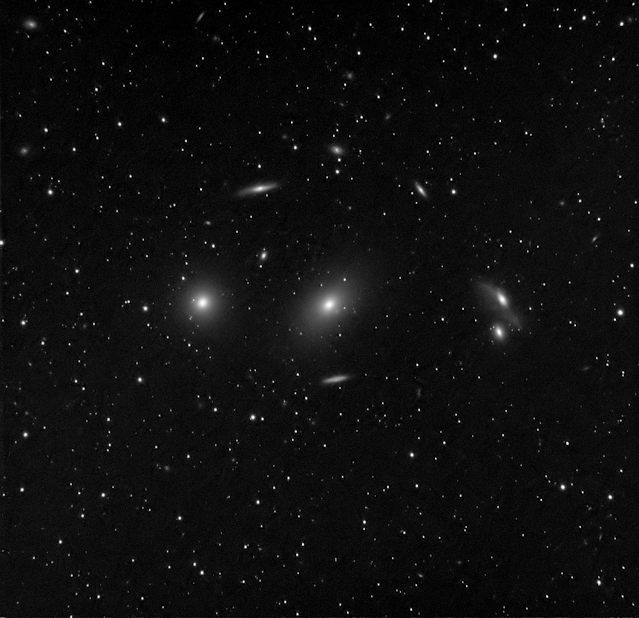AstroDMx Capture was used to capture FITS images before and after a meridian flip in bright moonlight. This article describes the problems and the workflow for this imaging session.
Equipment used
A William Optics 81mm Apochromatic ED doublet refractor with an 0.8 reducer/flattener was fitted with an Altair Quadband filter and an SVBONY SV605MC monochromatic cooled CMOS camera.
The Quadband filter was used as a contrast-enhancing, light-pollution filter, we could have used no filter or a UV/IR cut filter.
The same equipment capturing flats, using a variable brightness illuminated tracing panel, after the imaging session was completed.
Stretched, stacked flats showing the regions of varying brightness
Image with no flatfield calibration.
This shows that flatfield calibration is absolutely essentialClick on an image to get a closer view
AstroDMx Capture capturing 3 minute FITS images of M86 and surrounding galaxies
AstroDMx Capture capturing 3 minute FITS files following a meridian flip
Having captured images on the east side of the meridian, AstroDMx Capture flipped the mount and re-centred M86. Then images on the west side of the meridian were captured.
Three stacking programs; Affinity Photo, Siril and Deep Sky Stacker were used to calibrate, register the images from each side of the meridian in a single batch. They all performed as expected and rotated the images where required to match the reference frame decided by the program.
There was an 82% waxing Moon nearby and a marked gradient was produced across the image. Fitswork 4 was used to flatten the background and remove the gradient.
Fitswork 4 removing the gradient across the image
Animation showing the image before and after the gradient was removed
The flattened image was post processed in the Gimp 2.10 and Neat image
Final image of M86 and surrounding galaxies
This session tested the SV605MC camera which worked well. It demonstrated that flat fields were essential for the calibration of light frames to remove areas of reduced illumination probably caused by contamination of the sensor surface or the surface of the optical window in the camera.
It also showed that when a gradient is introduced into the image, probably in this case by a nearby bright Moon, the gradient can be removed by flattening the background in Fitswork 4. The resulting image reveals many galaxies in addition to the main 9 galaxies towards the centre of the image, centred on M86.
Result from Astrometry.net showing the numerous galaxies captured in this image










